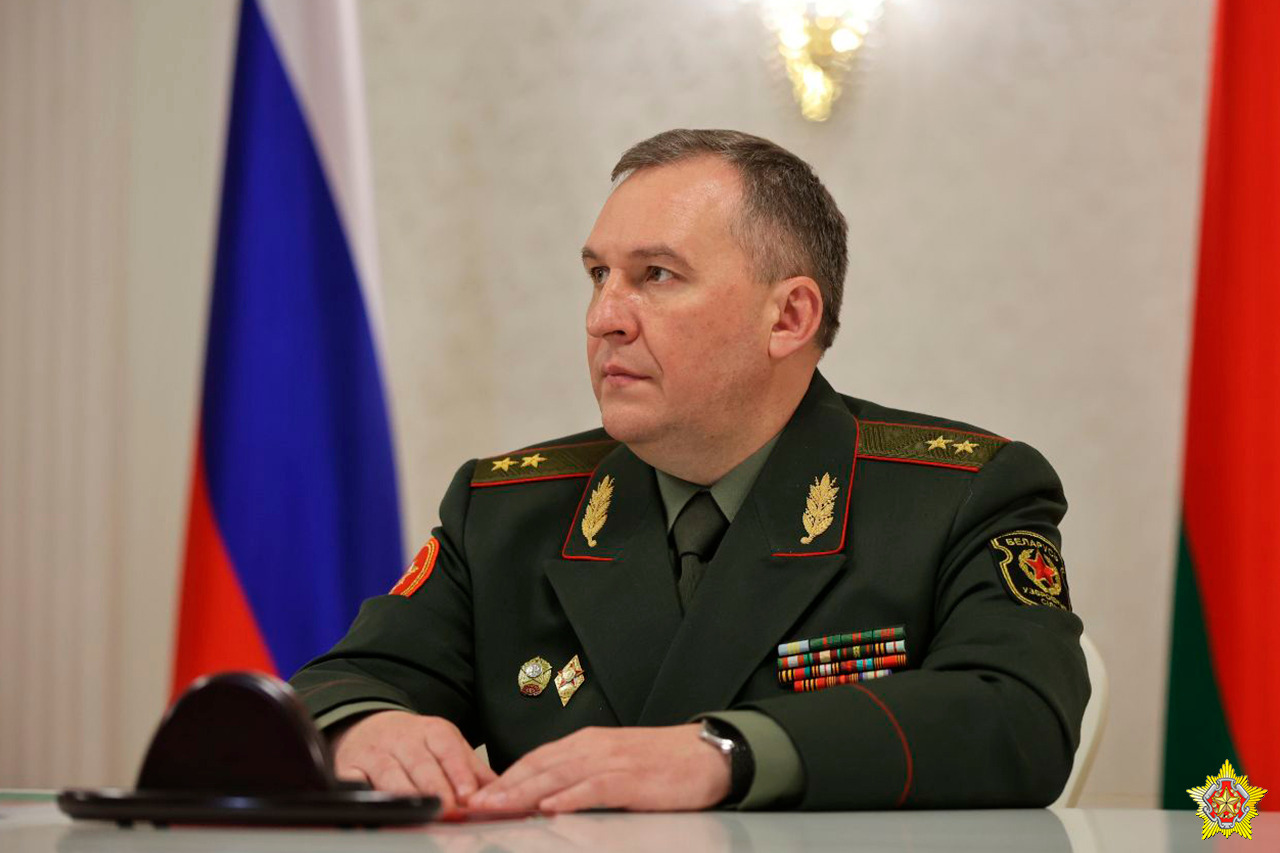The regime announces that Russian nuclear weapons are beginning to move to Belarus
 The situation got worse
The situation got worse

The successful raid of the Russian Volunteer Corps and the Freedom of Russia Legion in the Bryansk region accelerated the plan to deploy Russian nuclear weapons (NW) in Belarus. Formally, Russia and Belarus are emulating NATO’s joint nuclear missions: Russia provides nuclear warheads, and Belarus provides carriers along with aviation crews and missile crews if the Kremlin decides to use tactical nuclear weapons.
On May 25th, in Minsk, the defence ministers of Belarus and Russia, Viktar Khrenin and Sergei Shoigu, signed documents defining the procedure for stationing Russian “non-strategic nuclear weapons” in a Belarusian storage facility.
According to Minsk, this step is an effective response to the failure to provide Belarus with the security guarantees specified in the Budapest Memorandum of December 5th, 1994 and bellicose rhetoric, supported by practical actions against Belarus and Russia by the countries of the “collective” West.
According to Moscow, deployment of non-strategic nuclear weapons on the territory of Belarus is a response to threats posed by NATO joint nuclear missions. According to Shoigu, the measures “comply with all applicable international legal obligations.” Deploying nuclear weapons on Belarusian territory does not transfer control, and the decision to use such weapons remains with Moscow. This contradicts previous statements from Minsk about joint control and the ability to make unilateral decisions.
Shoigu also noted that additional measures may be taken in future to ensure the security of the Union State and respond to the military-political situation.
Lukashenka announced that the movement of nuclear weapons to Belarusian territory had already begun. This implies that both the number of nuclear weapons and their storage locations have already been determined.
From this it follows that the creation of a central storage base (CBH) for nuclear weapons (object “C”) intended for maintenance and full technical serviceability, is not envisaged.
Apparently, the plans involve a number of repair and technical bases (RTB) intended for the operation (reception, storage, maintenance) and issuance of nuclear weapons (warheads) for combat use. In Soviet times, 1180 strategic and tactical nuclear warheads of various types were deployed on the Belarusian territory (as of 1989).
Both the CBH and the RTBs assigned to them are organisationally subordinate to the 12th Main Directorate of the Ministry of Defence of the Russian Federation (12 GU MO), which controls the Russian nuclear arsenal. Both the CBH and the RTB have security detachments, which means that Russian nuclear weapons in Belarus will involve the deployment of additional Russian units.
The agreement, apparently, copies the so-called joint NATO nuclear missions, where the United States has agreements with a number of countries on the transfer of USAF assets in case of a military requirement for nuclear aviation ammunition from US storage bases in these countries. Thus, if the Russian Federation decides to use nuclear weapons, the protocol would be: Russian servicemen of the 12th GU MO at an RTB in Belarus mount ammunition on Belarusian carriers (Iskander-M OTRK, Su-25 bombers / Su-30 fighters). That implies a joint decision at the level of the Supreme State Council of the Union State, by Putin and Lukashenka.
The ratification of the agreement by Moscow and Minsk and the announcement regarding the commencement of movement of nuclear weapons met with a restrained international reaction. The US State Department, the European External Action Service and the Cabinet of Ministers of Japan condemned the plan. So far, these steps are assessed only in the context of Russian attempts to blackmail the West and strengthen military-political control over Belarus. Meanwhile, Washington does not intend to change its nuclear stance and does not see any signs that Russia is preparing to do so either.
Thus, another step has been taken towards the deployment of Russian tactical nuclear weapons in Belarus, likely to be accompanied by an increased Russian military presence, which is seen as an additional guarantee of deterring the transfer of hostilities to the territory of Belarus by Ukraine and its Western allies. The absence of visible construction or restoration work at Soviet storage facilities indicates that Belarus is equipped with several RTBs designed to prepare nuclear weapons for operational use, but not long term storage.
Subscribe to our newsletter




Situation in Belarus
Constitutional referendum: main consequences


 Video
Video
How to count the political prisoners: are the new criteria needed?


 Video
Video
Paternalism In Decline, Belarusian Euroscepticism, And The Influence Of Russia


 Video
Video












